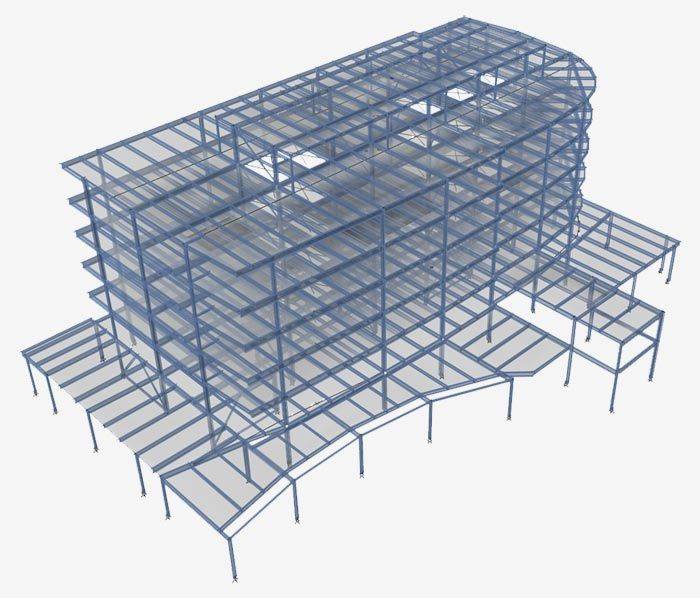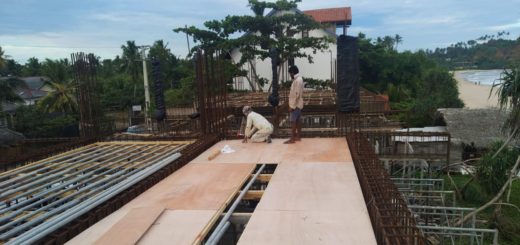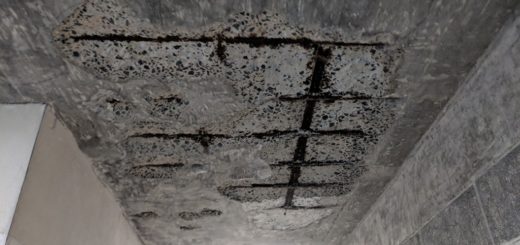Linear Analysis of Structures | Overview
Structural analysis is a crucial aspect of engineering design that involves understanding how structures behave under different loading conditions. Linear analysis of structures is a fundamental method used to analyze and predict the response of structures subjected to external forces. In this article, we will explore the concept of linear analysis in depth, discussing its importance, mathematical background, analysis techniques, applications, limitations, and more.
Structural analysis plays a vital role in ensuring the safety, reliability, and efficiency of various engineering structures, including buildings, bridges, mechanical systems, and aerospace components. Linear analysis, as the name suggests, assumes that the structural response is directly proportional to the applied loads, without considering nonlinear effects.
Understanding Structural Analysis
Linear analysis provides engineers with valuable insights into the behavior of structures, enabling them to make informed design decisions. By analyzing the internal forces, deformations, and stresses within a structure, engineers can ensure that it can withstand the anticipated loads and perform optimally throughout its intended lifespan.
Basic Concepts of Structural Analysis
To comprehend linear analysis, it’s essential to understand the basic concepts of structural analysis. These include concepts such as equilibrium, compatibility, and constitutive relationships. Equilibrium equations ensure that the sum of forces and moments acting on a structure is balanced. Compatibility equations ensure that the deformation of the structure remains consistent and compatible throughout. Constitutive equations describe the relationship between stresses and strains in the materials used in the structure.
Types of Structural Loads
Structural analysis takes into account various types of loads that a structure may experience. These include dead loads (permanent loads such as the weight of the structure itself), live loads (temporary loads like people, furniture, or vehicles), wind loads, seismic loads, and temperature loads. Understanding the magnitude and distribution of these loads is crucial for accurate structural analysis.
Mathematical Background of Linear Analysis
To perform linear analysis, engineers employ mathematical equations and models that describe the behavior of structures under different loading conditions.
Equilibrium Equations
Equilibrium equations, such as the sum of forces and moments, ensure that the forces acting on a structure are in equilibrium. By solving these equations, engineers can determine the internal forces and moments within the structure.
Compatibility Equations
Compatibility equations ensure that the deformation of the structure is compatible throughout its entire geometry. These equations take into account the deformations caused by applied loads and constraints, allowing engineers to accurately predict the structural response.
Constitutive Equations
Constitutive equations describe the relationship between stresses and strains in the materials used in the structure. These equations are derived from material properties and provide crucial information about how the structure will respond to different loading conditions. Understanding the constitutive behavior of materials is essential for accurate linear analysis.
Structural Modeling and Analysis Methods
Before conducting a linear analysis, engineers need to create a mathematical model of the structure. This process involves idealizing the structure by simplifying its geometry and dividing it into smaller elements. Two commonly used methods for structural analysis are the Finite Element Method (FEM) and Matrix Analysis.
Idealization of Structures
Idealization involves simplifying the complex geometry of a structure into smaller, manageable elements such as beams, plates, or solid elements. These elements are interconnected to represent the overall behavior of the structure. The accuracy of the analysis depends on the level of detail and complexity of the idealization.
Finite Element Method
The Finite Element Method (FEM) is a powerful numerical technique used to solve complex structural problems. It divides the structure into finite elements, where the behavior of each element is described by a set of equations. By solving these equations for all elements and considering their interactions, engineers can obtain an accurate representation of the structure’s response to different loading conditions.
Matrix Analysis
Matrix analysis is another method used for structural analysis, particularly for framed structures. It involves representing the structural elements as interconnected matrices and solving a system of linear equations. Matrix analysis allows engineers to calculate the displacements, forces, and moments within the structure, providing valuable insights into its behavior.
Structural Analysis Techniques
Linear analysis encompasses various techniques that help engineers understand the response of structures to different loading conditions. These techniques can be broadly categorized into static analysis and dynamic analysis.
Static Analysis
Static analysis focuses on determining the response of a structure under steady loads or forces. It helps engineers evaluate the internal forces, moments, and displacements within the structure when subjected to static loads. Static analysis is commonly used in the design of buildings, bridges, and other structures that experience relatively constant loading conditions.
Dynamic Analysis
Dynamic analysis, on the other hand, deals with the response of structures to time-varying or dynamic loads. It considers the effects of forces that change with time, such as wind loads, seismic events, or vibrating machinery. Dynamic analysis enables engineers to assess the structural behavior under dynamic conditions and ensure its stability, comfort, and safety.
Structural Response and Design
Once the linear analysis is conducted, engineers can determine the response of the structure and use this information to optimize its design. The structural response includes factors such as deformations, stresses, strains, and displacements. By analyzing these responses, engineers can make informed decisions regarding material selection, member sizing, and reinforcement placement.
Determining Structural Response
The determination of structural response involves evaluating various parameters such as deflections, bending moments, shear forces, axial forces, and stresses. Engineers use these parameters to assess the structural performance and ensure that they are within acceptable limits to guarantee the safety and functionality of the structure.
Limit States Design
Limit states design is a crucial aspect of structural analysis and plays a significant role in ensuring structural safety. Engineers establish design criteria based on relevant codes and standards, specifying limits for factors such as stress, deflection, and stability. The structure must satisfy these limits to prevent failure and maintain the required level of performance.
Applications of Linear Analysis
Linear analysis has extensive applications across various fields of engineering. Here are a few examples:
Building and Bridge Design
Linear analysis is widely used in the design of buildings and bridges to evaluate their structural behavior. It helps engineers determine the appropriate sizing and reinforcement requirements to ensure that the structures can withstand the anticipated loads and maintain their integrity.
Aerospace Engineering
In aerospace engineering, linear analysis is employed to analyze the structural response of aircraft, spacecraft, and other aerospace components. It helps engineers understand how these structures will behave under different loading conditions, including aerodynamic forces, vibrations, and thermal effects. This information is crucial for designing lightweight yet robust structures that can withstand the harsh conditions of space or high-speed flight.
Mechanical Systems
Linear analysis is also utilized in the analysis of mechanical systems, such as machinery, vehicles, and industrial equipment. By applying linear analysis techniques, engineers can assess the structural integrity, stability, and performance of these systems. It helps identify potential issues, such as excessive vibrations or stress concentrations, allowing for design modifications and improvements.
Challenges and Limitations of Linear Analysis
While linear analysis is a powerful tool, it does have certain limitations and challenges that engineers must consider.
Assumptions and Simplifications
Linear analysis relies on certain assumptions and simplifications to make the calculations feasible. These assumptions, such as linear material behavior and small deformations, may not accurately represent the actual behavior of the structure under extreme conditions. It is essential for engineers to understand the limitations of these assumptions and validate the results through experimental testing or more advanced analysis methods if required.
Nonlinear Effects
Linear analysis neglects nonlinear effects that can significantly influence the behavior of structures. Nonlinearities can arise due to material behavior, large deformations, contact interactions, or other factors. In situations where nonlinear effects are prominent, linear analysis may not provide accurate results. Nonlinear analysis techniques, such as finite element analysis, are often required to capture the complex behavior of structures under such conditions.
Linear analysis of structures is a fundamental approach used in engineering to understand and predict the behavior of various structures under different loading conditions. It provides valuable insights into the internal forces, deformations, and stresses within a structure, enabling engineers to optimize its design for safety and performance. However, it is crucial to recognize the limitations of linear analysis and employ more advanced techniques when necessary.
FAQs
1. How is linear analysis different from nonlinear analysis? Linear analysis assumes that the structural response is directly proportional to the applied loads and neglects nonlinear effects. Nonlinear analysis considers the complex behavior of structures under extreme conditions, accounting for factors such as large deformations, material nonlinearity, and contact interactions.
2. Can linear analysis accurately predict the behavior of complex structures? Linear analysis is suitable for relatively simple structures and situations where the applied loads are within the linear range of the materials. For complex structures or extreme loading conditions, nonlinear analysis methods may be required to obtain accurate predictions.
3. What software tools are commonly used for linear analysis? There are several software tools available for linear analysis, such as SAP2000, ANSYS, STAAD.Pro, and Abaqus. These tools provide powerful capabilities for modeling, analyzing, and visualizing the behavior of structures.
4. Is linear analysis applicable to all types of materials? Linear analysis assumes linear material behavior, which may not accurately represent the behavior of certain materials like elastomers or composites. For such materials, specialized nonlinear analysis techniques are required to capture their unique characteristics.
5. What are the future developments in linear analysis? The future of linear analysis lies in improving its accuracy by incorporating more advanced material models, considering nonlinear effects within certain limits, and integrating it with other analysis techniques such as computational fluid dynamics (CFD) for more comprehensive simulations.




